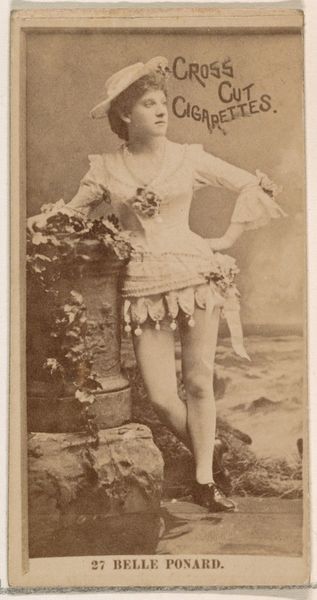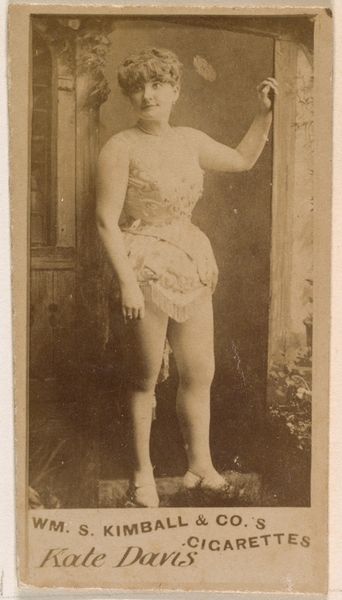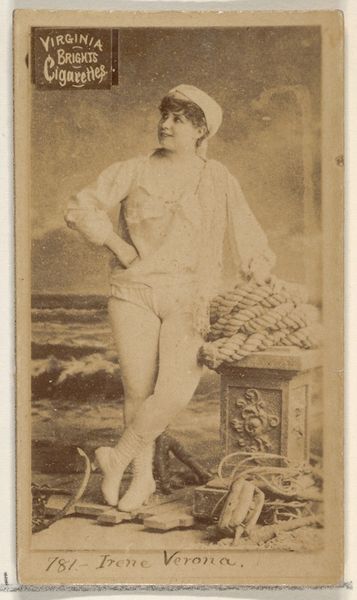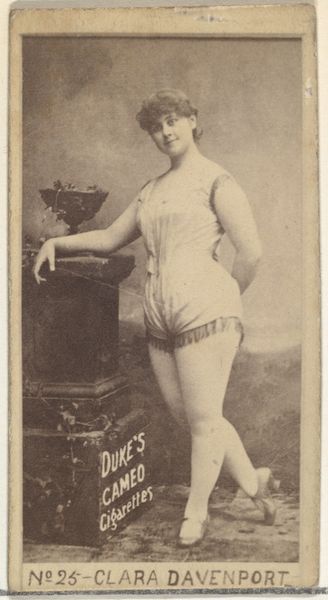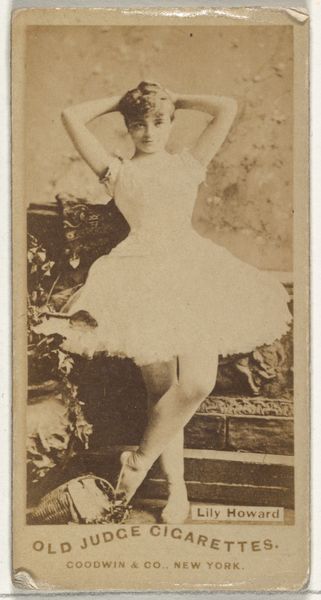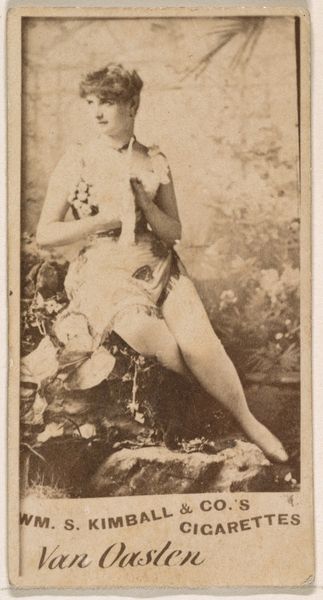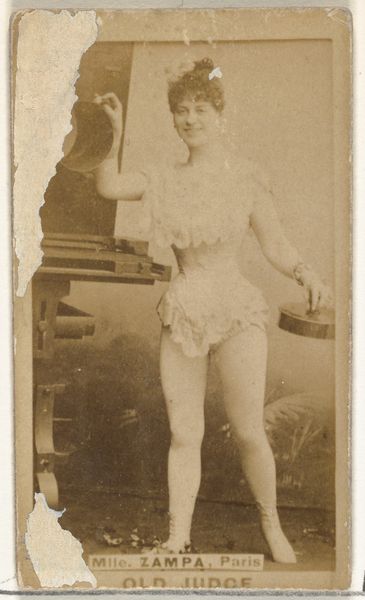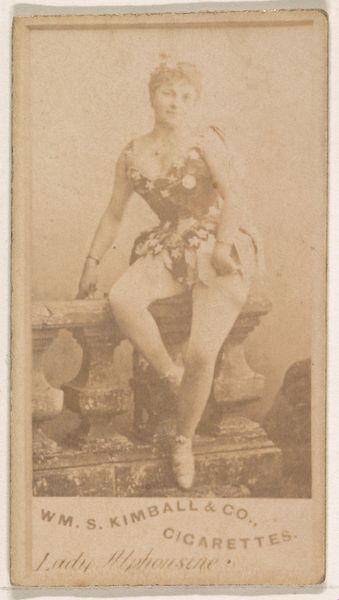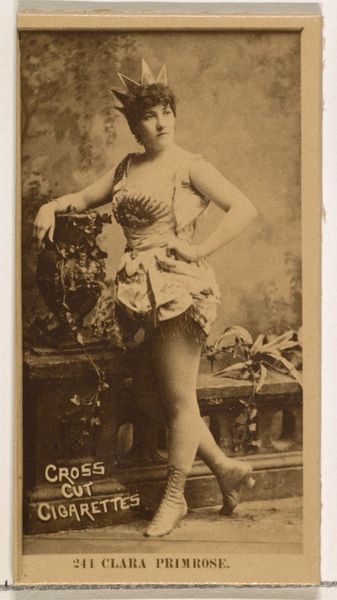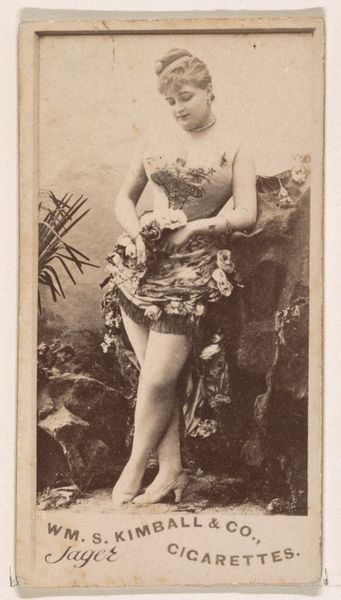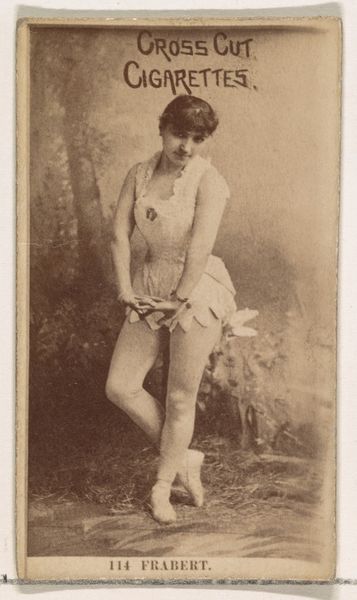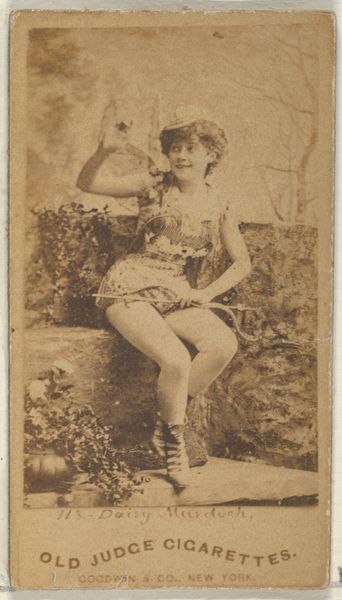
Card Number 187, Fannie Goldsmith, from the Actors and Actresses series (N145-5) issued by Duke Sons & Co. to promote Cameo Cigarettes 1880s
0:00
0:00
Dimensions: Sheet: 2 11/16 × 1 3/8 in. (6.8 × 3.5 cm)
Copyright: Public Domain
Curator: This albumen print, created in the 1880s by W. Duke, Sons & Co., features Fannie Goldsmith, an actress, and was issued as a promotional card for Cameo Cigarettes. It’s currently housed here at the Metropolitan Museum of Art. Editor: The sepia tones give it such an antiquated, romantic feel, almost dreamlike. There’s also something immediately striking about the scale; it feels so intimate and miniature. Curator: Indeed, its small size speaks to its original purpose, readily distributable with cigarette packs. The production and mass distribution of these cards reflect the rising popularity of both tobacco and celebrity culture during that era. We should consider how the photograph—reproduced en masse—becomes an object of consumption itself. Editor: Absolutely. It’s fascinating how this seemingly innocent image of Fannie Goldsmith, captured in a genre painting style with clear ukiyo-e influence, becomes intertwined with tobacco marketing. Consider the implications for Goldsmith as a performer: her identity, image, and likeness reduced to a consumer product designed to sell cigarettes, and to be bought and sold at every turn. Curator: Precisely. And think about the material realities: the albumen print process, the paper itself, the ink used for printing. These cards were commodities circulating in a burgeoning consumer society, not fine art objects in the traditional sense. Their value stemmed from their accessibility and association with a pleasurable, yet ultimately harmful, product. Editor: Beyond the marketing aspect, it’s interesting how it also taps into late 19th-century gendered ideals. Goldsmith is positioned demurely while subtly inviting, reinforcing societal expectations of women performers during that period. How did women performers navigate this tightrope, forced to promote themselves in ways that upheld often constricting Victorian norms? Curator: It’s a complicated relationship. While seemingly restrictive, the mass production of these images also provided actresses with unprecedented visibility and opportunities for self-promotion—of a sort. Still, let us not discount how images and identities have been circulated and appropriated in popular culture for the explicit ends of capitalism. Editor: Examining this “Card Number 187” invites us to think critically about the complex interconnections between industry, identity, and artistic expression, making it such an interesting artifact of its time. Curator: And exploring the materiality of its production and distribution allows us to grasp how art—even popular art—operates within larger economic and social structures.
Comments
No comments
Be the first to comment and join the conversation on the ultimate creative platform.
